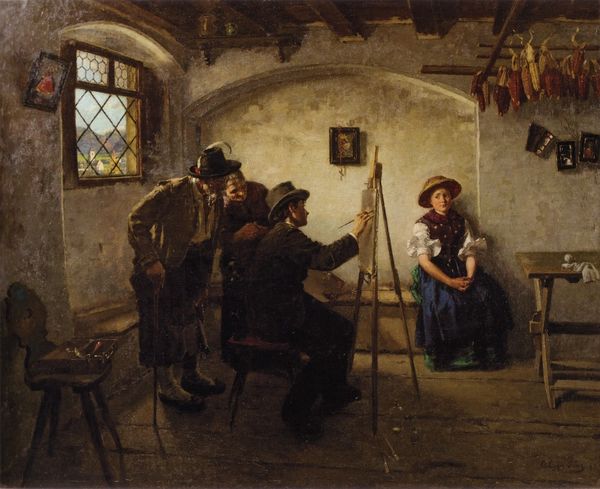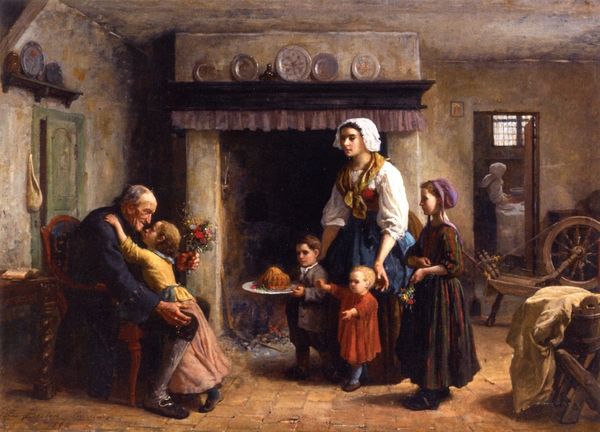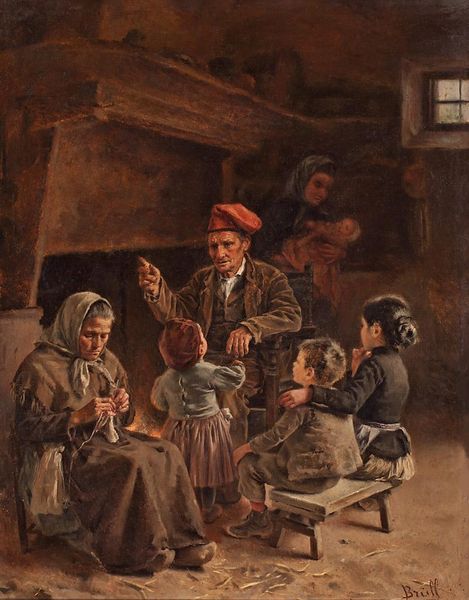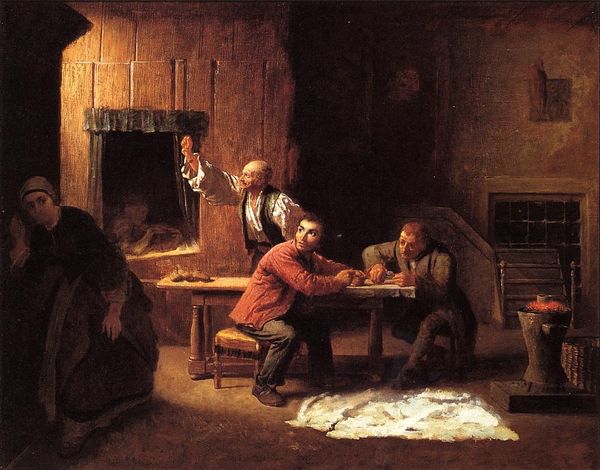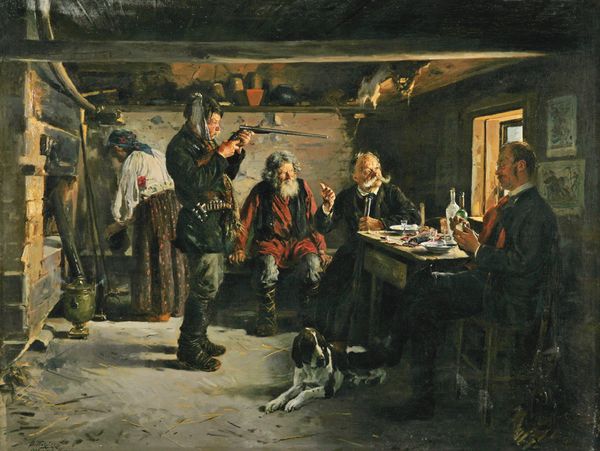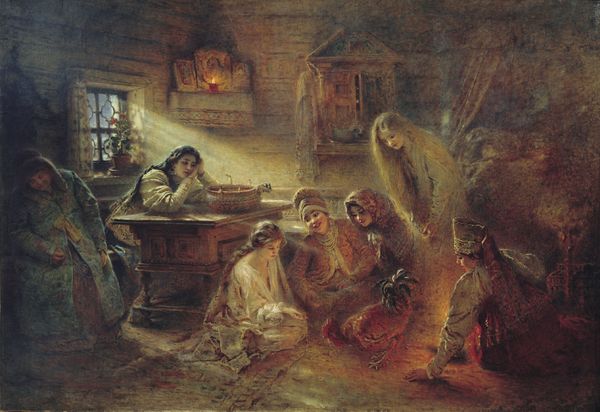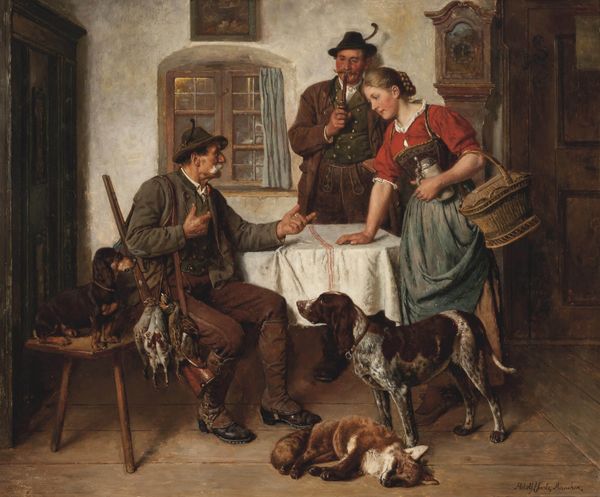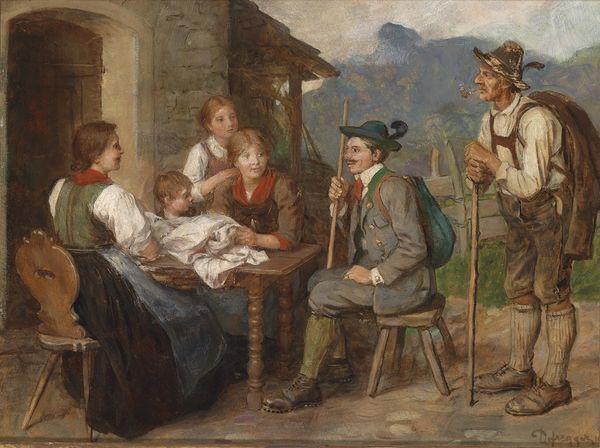
Copyright: Public domain
Editor: Ferdinand Georg Waldmüller’s "Entrance of the Newlyweds," painted in 1859, uses oil paint to capture a tender domestic scene. I find it really heartwarming—what stands out to you when you look at it? Curator: This work speaks volumes through its iconography. The doorway itself… what does it signify to you? Isn't it more than just an opening? Editor: Well, immediately, I think about thresholds… new beginnings. But I am sure I am missing something deeper. Curator: Absolutely! Doorways in art are potent symbols, especially in marriage scenes. Think about the Roman god Janus, who guards doorways and represents transitions. Waldmüller positions the newlyweds as literally stepping into a new phase of life, watched over by community and tradition. But note also, the mountains visible in the distance—they signify the enduring strength, and timeless nature of marriage itself. Editor: Ah, the mountains! So, the doorway and the landscape both function as symbols to reinforce the painting’s meaning. Curator: Exactly. Now consider the child reaching out—barefoot, vulnerable. What is the emotional charge of this motif? What is he longing for? The red headscarves, too...They recur throughout the painting. How do they tie the painting together? Editor: He’s reaching for connection, definitely. Maybe a little overwhelmed? The red headscarves give the painting a unity... it’s a familial connection, of belonging. I'd never considered the deeper layers behind such an apparently simple genre scene. Curator: Waldmüller masterfully layers the symbolic and the real. We can observe here, again, that seemingly simple scenes conceal a richness of cultural memory. Editor: This was a wonderful way to explore the piece. I'll never look at doorways, mountains, or headscarves the same way again!
Comments
No comments
Be the first to comment and join the conversation on the ultimate creative platform.

